TELL ME About It: AAC Learning with ‘No, David!’
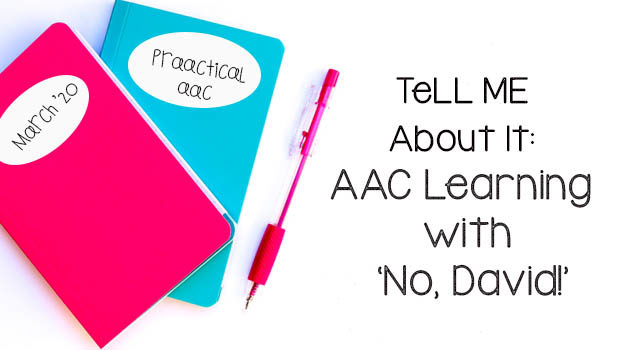
Maggie Judson and Jeanna Antrim are back with another guest post in the series, TELL ME About It. These two AAC SLPs work in the Assistive Technology Department for the Belleville Area Special Services Cooperative (BASSC) in southern Illinois. In today’s post, they cover ways to promote AAC use while focusing on the book ‘No, David!’ In this series, they discuss how they support preschool teachers who are implementing the TELL ME program with their young students.
Maggie and Jeanna are both AT/AAC facilitators who provide evaluations, direct therapy, and consultations, and train school teams on AAC implementation. Enjoy their prAACtical suggestions and don’t miss their Lesson Plan, video demonstrations, and other resources at the end of the post.
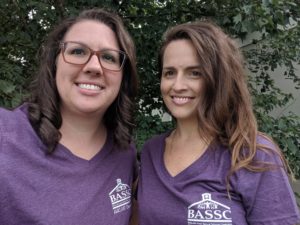
TELL ME About It: AAC Learning with ‘No, David!’
TELL ME About Reading: The seventh book in the TELL ME program (Teaching Early Language and Literacy through Multimodal Expression) is “No, David!”. An excellent book for eliciting reactions and interjections from students because of all the hilarious and shocking (perfect example – David running around outside without clothes) scenes and illustrations! It is great for bridging background knowledge to the storyline and pictures, as the story takes place in the home with lots of play situations that students may have experience with themselves.
Oh, and also! It’s another fabulous book for the repeated targeting of core words! You can easily incorporate each target core word on every. single. page – “oh NO!”, “that is BAD!”, “don’t PLAY there!”, “COME here!”. How fun is that?!
See below for the rest of the book focus for “No, David!”:
Book Focus: No, David!
- Core Words (BOW WOW Words): BAD, COME, NO, PLAY
- Additional Words (Tiger Talk Words): messy, now
- Concept Vocabulary: family and home environment vocabulary
- Special Letter: o
- Book Concept: where to go at the end of a line
TELL ME About Writing
One of the main components of the TELL ME program is helping us as educators get more knowledgeable about and comfortable with providing emergent writing instruction to our students. To help us with this, TELL ME breaks writing down into daily activities. Which is perfect, because one of the primary goals of emergent writing that we need to address for our students with complex communication needs is the goal of getting them writing on the daily (Erickson, K., & Koppenhaver, D., 2020, p. 84)! With that in mind, let’s check out today’s writing lesson:
- Before Writing: Review those core words! Before digging into writing, work in more exposure to the target words – BAD, COME, NO, PLAY – by holding up word/symbol cards and supporting students to repeat the word. Then review the title of your predictable chart for the book. All of this review and practice helps our students get that repeated exposure (aka the opportunity to hear and use words repeatedly) that they require to learn new words!
- Writing: In today’s lesson, we start to turn the predictable chart sentences into a book! This is typically a super exciting and engaging activity for students because they love to see their thoughts put into writing, and their writing turned into a book they can then read. The TELL ME manual comes with a PowerPoint template you can use for this (thank you TELL ME!!). Take the chart you created in the earlier lessons and type it into the included template or whatever program you like to use. Using a computer screen or whiteboard, introduce the electronic version of the chart and reread the title and each sentence, providing aided language input on the AAC systems as you come across all those core words – “NOW, let’s READ our story. FIRST, let’s READ our title. IT is, ‘GOOD Food and BAD Food.'” Support students to read back the sentence they wrote – verbally, with AAC supports, or through touch reading, which is where the student touches each word as it is read aloud during choral reading. And boom! You’ve completed another writing lesson with your students, congrats!
- After Writing: Work on that special letter ‘o’! Sing the letter song, and when you get to the letter ‘o’ part pause (remember that wait time!) to allow students the opportunity to say the letter name and sound using natural speech, manual signs, a letter board, or their SGDs. You can take the special letter exposure a step further by creating an easy sorting game – sort items, pictures, or letter cards into two groups, the ‘o’ group and the NOT ‘o’ group.
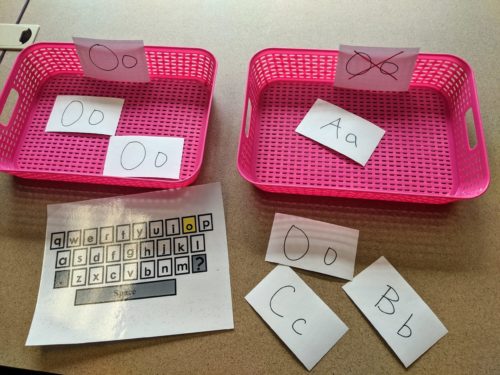
TELL ME More: Below are some specific ideas on how to implement “No, David!” in your therapy sessions and classrooms TELL ME-style!
- Activity – Arrival Time!
Arrival time is typically a routine-based activity within the classroom – which makes it a natural time to incorporate those core words into different rote phrases and scripts. This can be a great way to get all communication partners in the classroom comfortable with targeting core words and providing aided language input on AAC systems, as you can say these words and phrases day after day. Some examples:
- “Hello, COME in!”
- “Oh, is the weather BAD out today?”
- “We will get to PLAY later!”
- “NO coats to hang up, it is warm outside!”
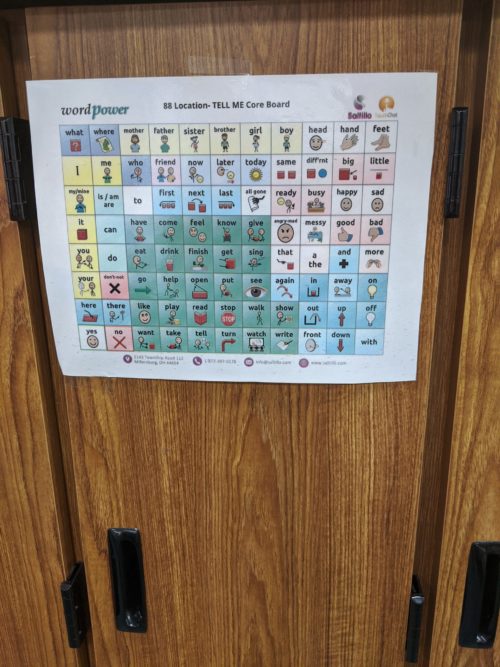
- Teaching Strategy – Providing Feedback – Verbal Referencing!
Verbal referencing can be a great teaching strategy to respectfully acknowledge the nonverbal communication attempts from your students while demonstrating other, more symbolic ways to communicate. Verbal referencing, in a nutshell, is verbally labeling and attributing meaning to the body language, behaviors, and gestures you observe a student using. For example:
- “You are turning your head away from me. I think maybe you are telling me NO.”
- “I see you looking at the toys. Maybe you want to PLAY?”
- “I hear you making a sound and see you looking at your friend. I wonder if you want her to COME over?”
- “I see your eyes and lips scrunching up. Maybe that means you think the snack tastes BAD.”
Labeling the actions that you see and attributing meaning to them, while demonstrating ways to communicate these messages by providing aided language input with the student’s AAC system, can be a super powerful instructional strategy to improve the language development for your students.
- Implementation Tip – Keep It Natural!
During shared reading, it can be useful to have some scripts ready to go to help us think through the activity and to work in those target core words. But our students also benefit when our language and communication are natural, flexible, and goes with the flow! Is your student repeatedly flipping the pages backward? Or wants to keep looking at one page? Go with it, and change up your targeted core word to take advantage of their interest and excitement! For example, on this page in “No, David!” our students often point to the pot on David’s head, so we deviate from the script of the target core words and follow their lead! “Pot ON head. THAT is silly! I wonder if you have ever PUT a pot ON your head?”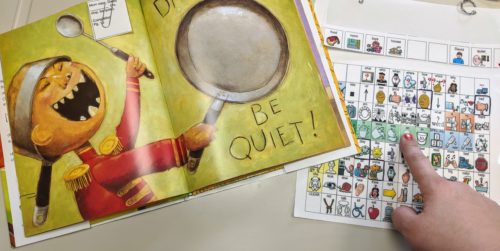
The target core words for this book are BAD, COME, NO, PLAY, but these are not the only words you can provide aided language input for during your reading activities. Take advantage of those in-the-moment, natural interactions, and follow your student’s lead!
- Aided Language Input Tip – Respond To All Communication Attempts!
When doing an activity, we can sometimes get so caught up in what language skills and words we are trying to elicit that sometimes we miss a communication attempt from our students. For instance, during our latest shared reading group, a student said, “yuck,” but we couldn’t see a clear connection from that word to the current page in the book. But it is important to be mindful that even if we don’t see a clear link, we need to find a way to relate communication attempts to the activity/situation and give it meaning. So, taking the “yuck” example, we referenced it back to the story and said – “Yuck! You’re right. Earlier in the book David had his mouth full of food, and that was yucky!”.
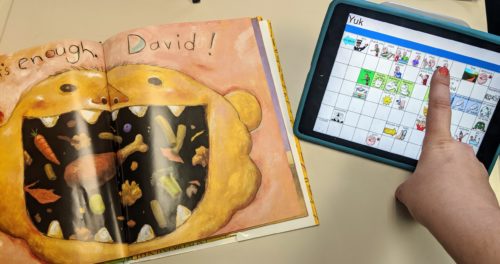
Also, we want to remember to not give generic, non-meaningful feedback responses to our student’s communication attempts. Phrases such as ‘good talking’ or ‘I like how you used your words’ do not provide meaning and do not teach language. Specific feedback directly related to the attempt helps the student make connections and see that their communication attempts are purposeful and meaningful! Look at feedback as a way to respond to a student’s utterance to expand the message and build on what the student said to extend the conversation. Let’s take the ‘yuck’ example again. Provide feedback by using the strategy of ‘adding one more’ to expand the message – ‘THAT yuck’ – and then build on it to extend the conversation – ‘I wonder what else you think is yucky?’
This type of feedback provides meaning and helps to further develop the language and communication skills for our students. Plus, you get to work in more core word exposure, which you know the TELL ME program is all about!
- Goal Ideas – Providing shared reading and writing opportunities directly relates to IEP goals, as these activities align with various core standards. Here are some examples you may find applicable:
- ELA-Literacy.RF.K.4 Read emergent-reader texts with purpose and understanding.
- ELA-Literacy.RF.K.3a Demonstrate basic knowledge of letter-sound correspondences by producing the primary or most frequent sound for each consonant.
———————————————————————————————————————
To read more about how we prepare for a TELL ME week, check out our previous posts in the TELL ME About It series!
- Go Away Big Green Monster!
- What Do You Like?
- Here Are My Hands
- From Head to Toe
- I Went Walking
- Brown Bear, Brown Bear
- TELL ME AAC Literacy Kits
Be sure to check back next month as we work through the TELL ME manual and share activities, teaching strategies and implementation tips for the next book in the program, “Come Out and Play, Little Mouse!
RESOURCES and REFERENCES:
- Erickson, K,. & Koppenhaver, D. (2020). Comprehensive Literacy for All: Teaching Students with Significant Disabilities to Read and Write. Baltimore, MA: Paul H. Brookes Publishing Co.
- You can purchase the TELL ME manual from the Attainment Company or from ASHA.
- You can learn more about the program by watching the webinar TELL ME: AAC for the Preschool Classroom presented by Dr. Carole Zangari, available from Saltillo (bit.ly/2RNpykn).
You can find our Lesson Planning form for “No, David!” and a blank form here.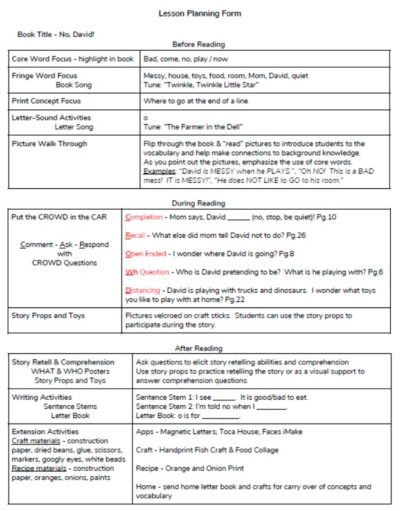
Check out the videos of us reading the book “No, David while providing aided language input for the target core words.
Saltillo WordPower
Follow us on Instagram @basscAAC and subscribe to our YouTube channel (basscAAC) for more AAC implementation ideas!
Filed under: Featured Posts, PrAACtical Thinking
Tagged With: TELL ME
This post was written by Carole Zangari
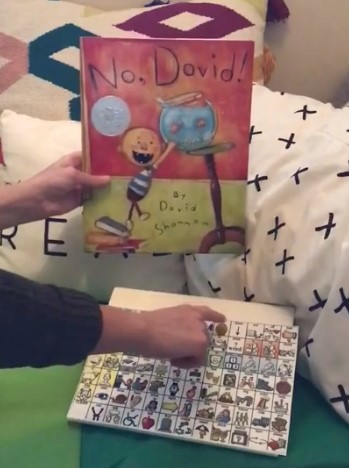
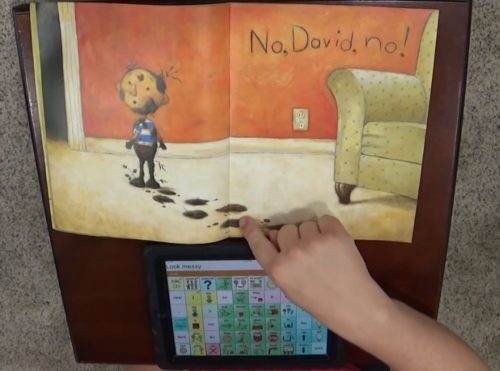

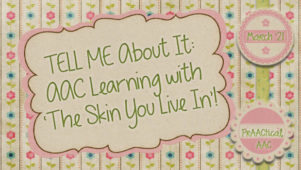
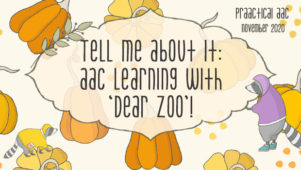
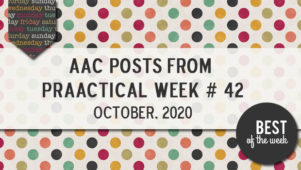
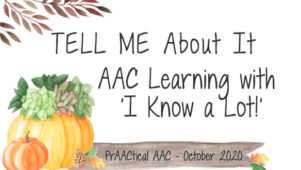
1 Comment
This is absolutely fantastic!! Thank you!